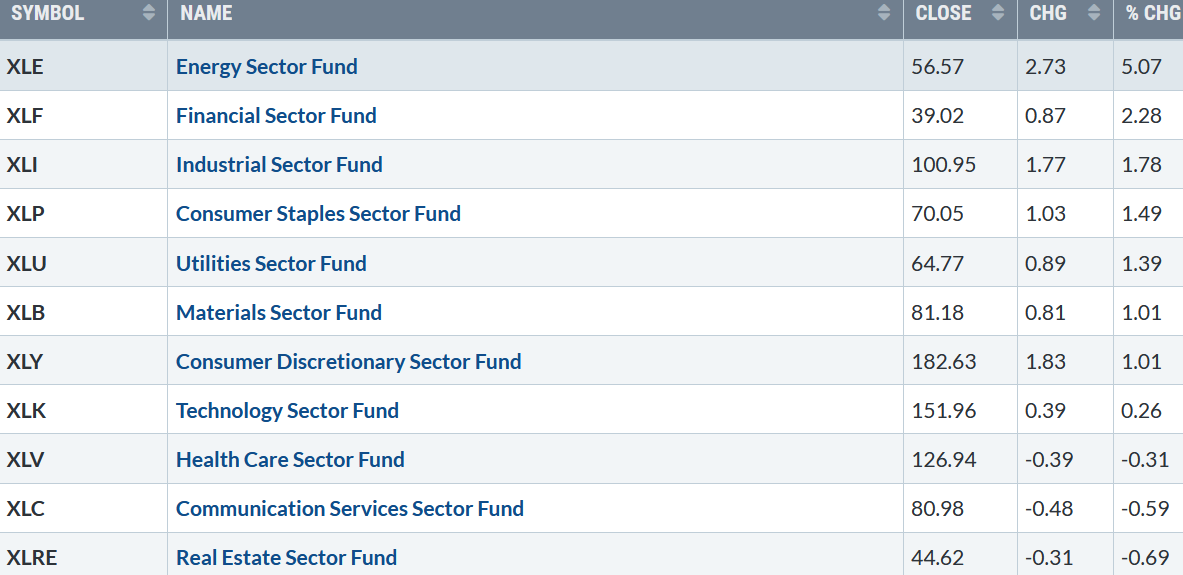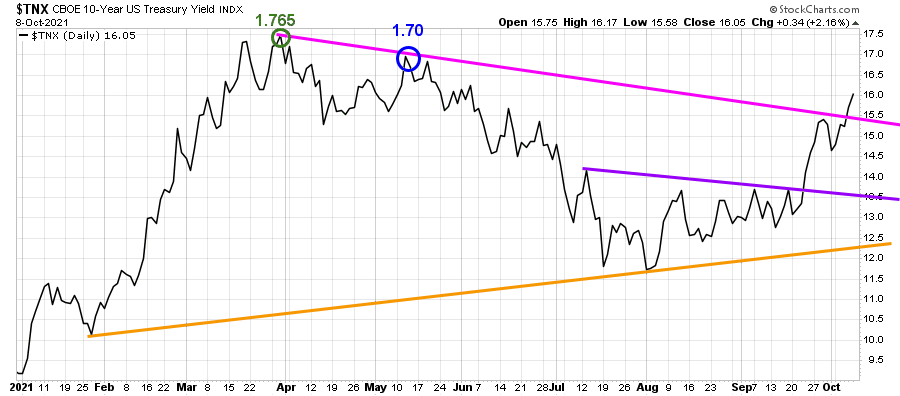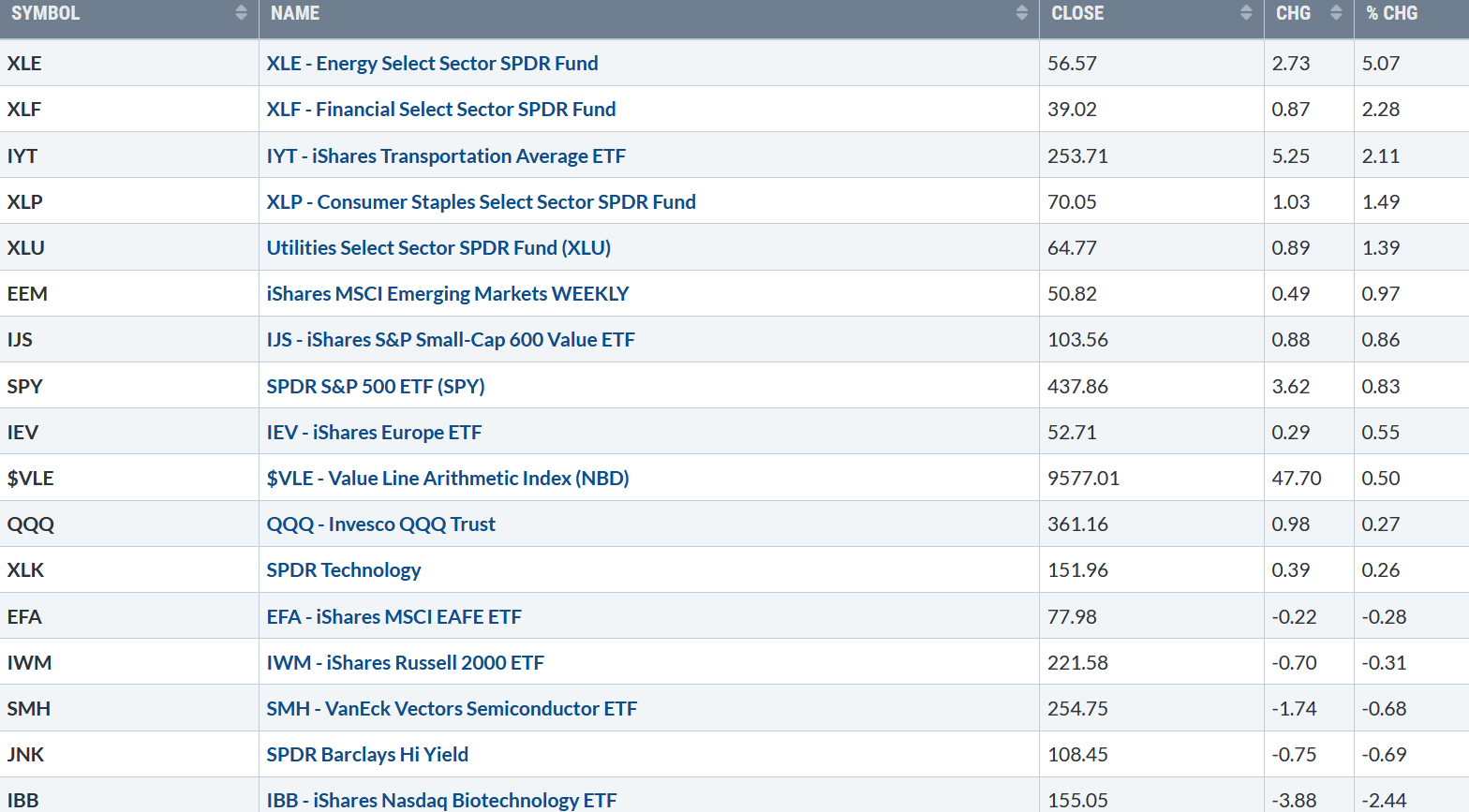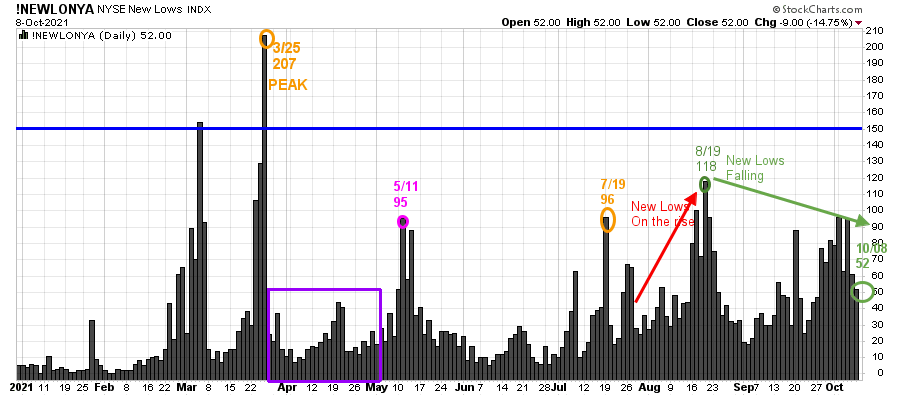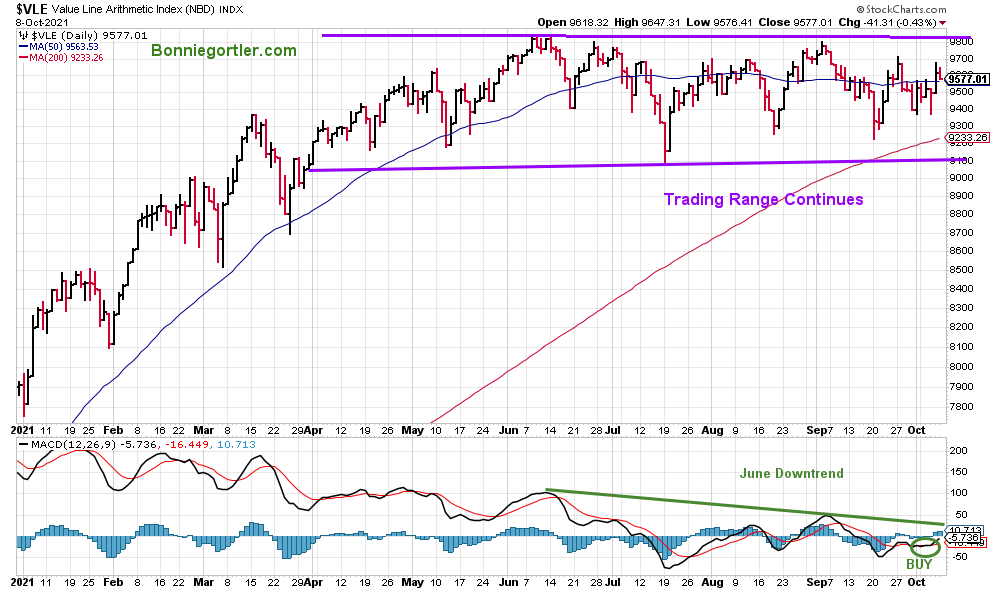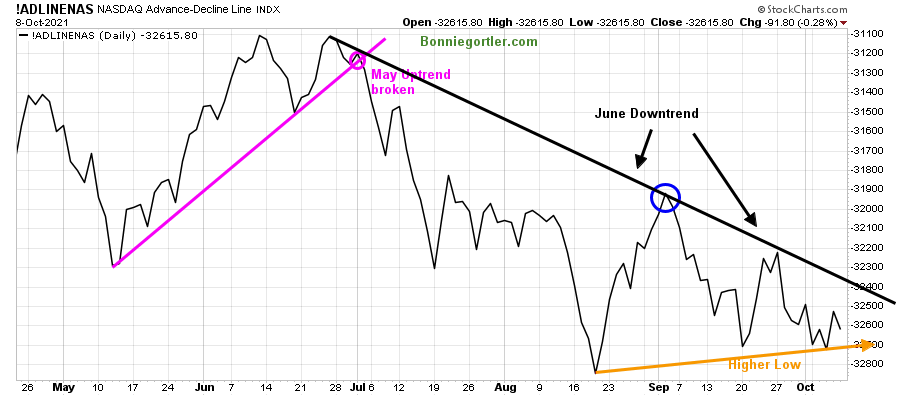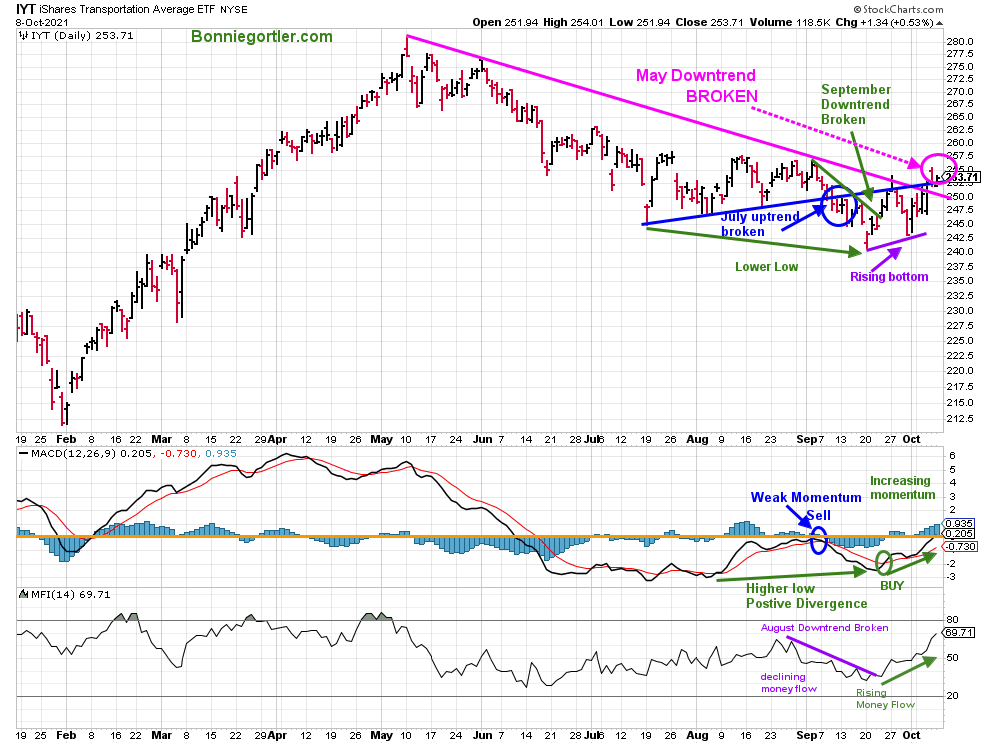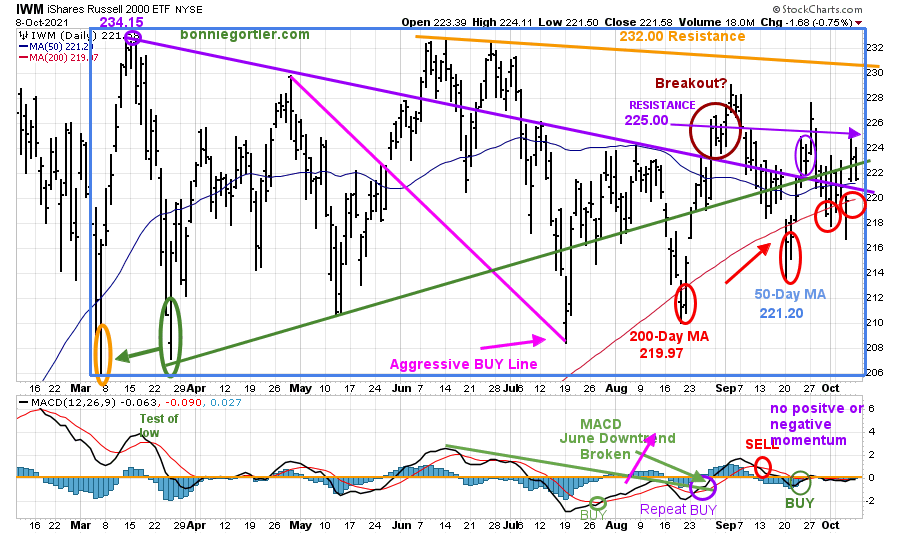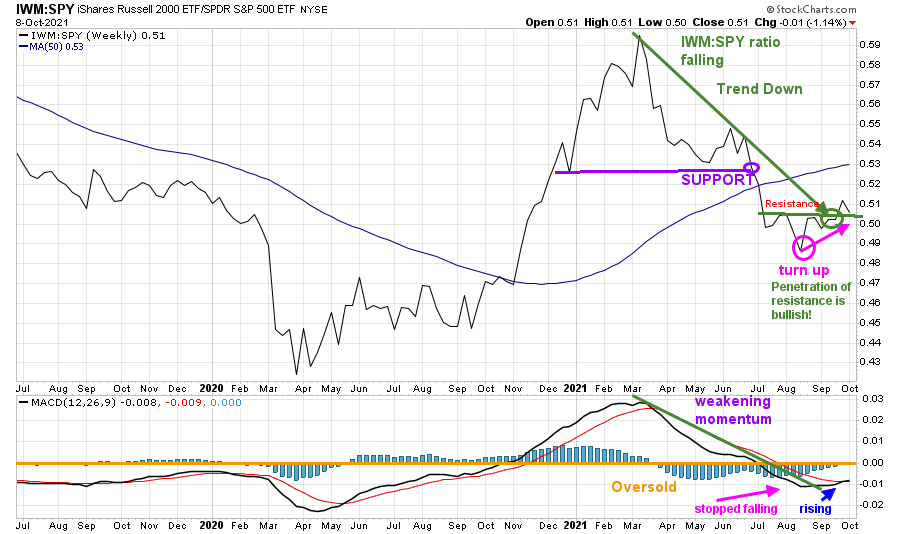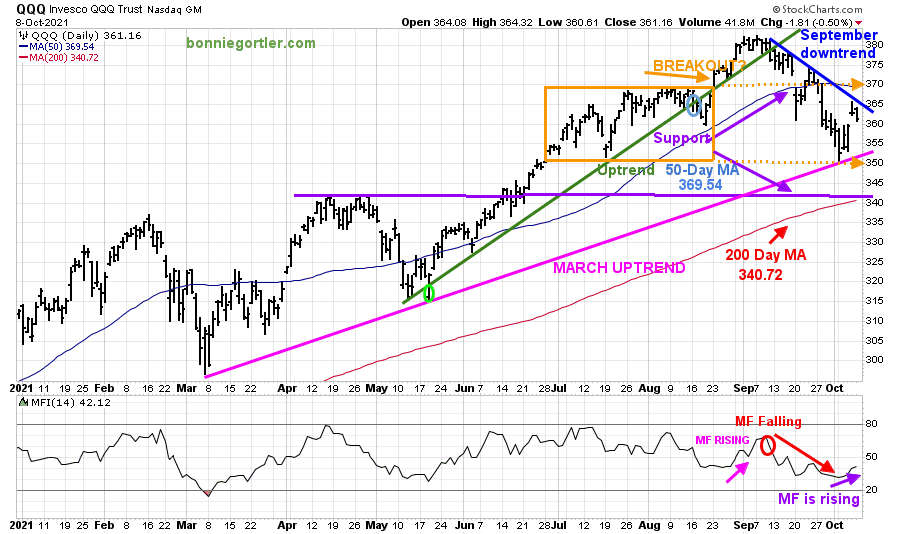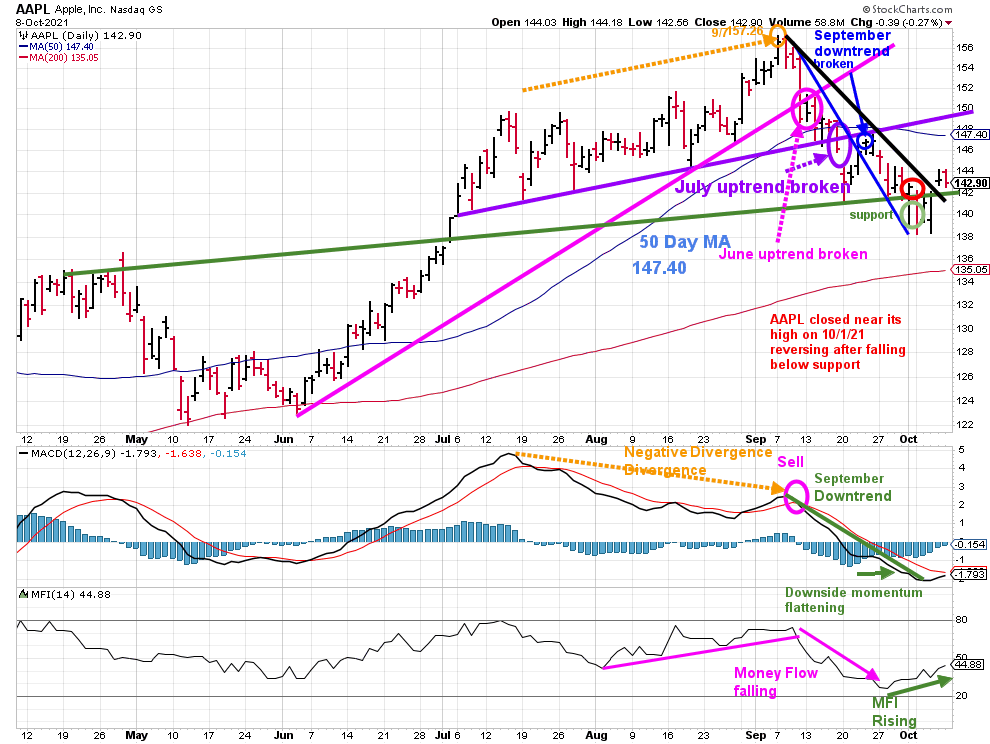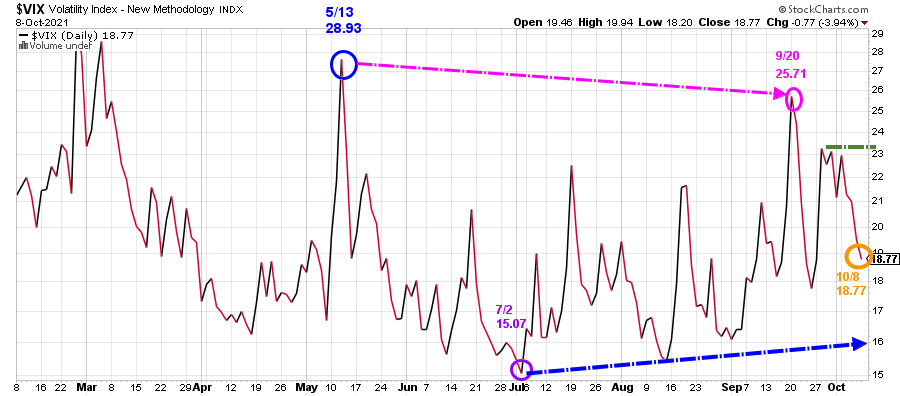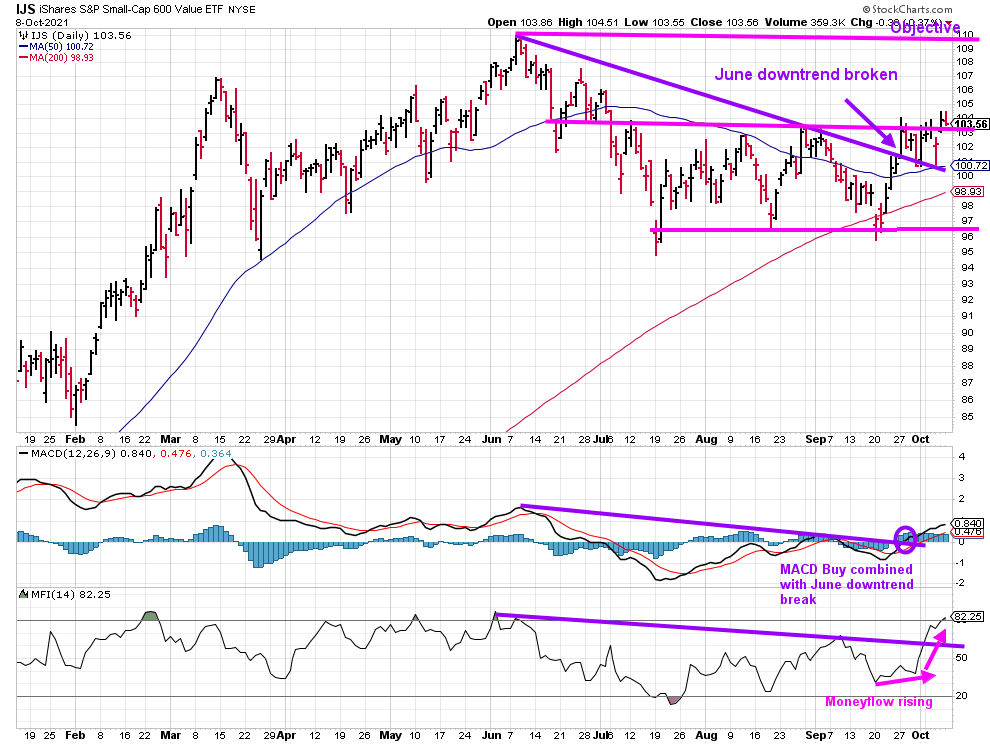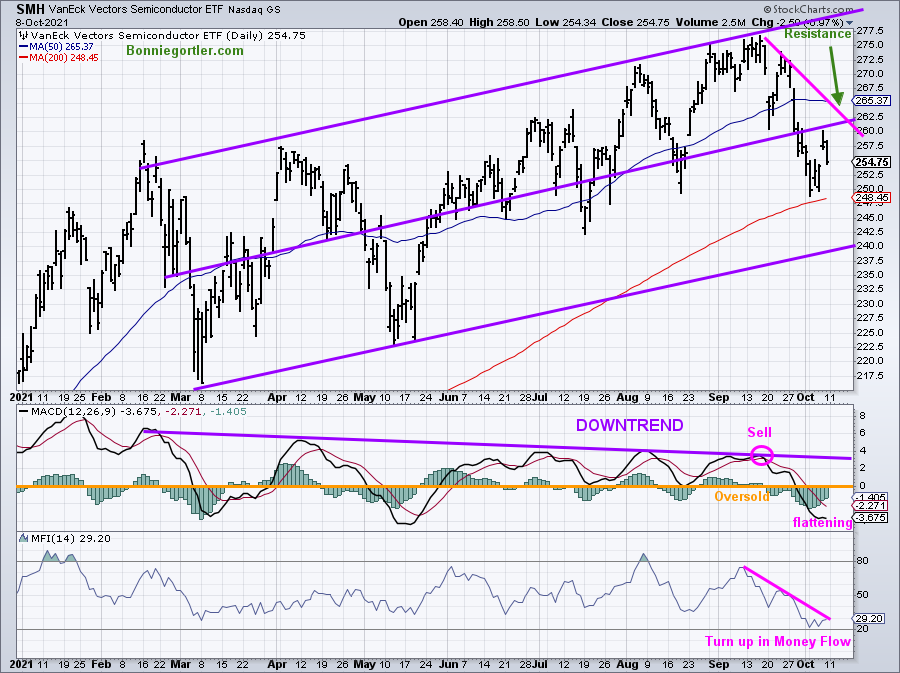Market Wealth Update Week Ending 10/08/21
Market Wealth Update Week Ending 10/08/21
Investors turned cautious on Friday after consecutive days of gains. Seven sectors were stronger than SPDR S&P 500 ETF Trust (SPY), up 0.83% the week ending 10/8/21. Energy (XLE) and Financials (XLF) were the best sectors, Communications (XLC) and Real Estate (XLRE) were the weakest.
S&P SPDR Sector ETFs Performance Summary
Week Ending 10/08/21
Source: Stockcharts.com
The Dow rose +1.22%, the S&P 500 up +0.79%, and Nasdaq +0.09% in a volatile week after starting lower. The Russell 2000 Index lagged down -0.38%. However, an encouraging sign for the bulls is the Value Line Arithmetic Average, a mix of approximately 1700 stocks, rose +0.50%, not giving up any ground.
Market breadth was mixed. The New York Stock Exchange Index (NYSE) had 1735 advances and 1754 declines. Nasdaq had 2100 advances and 2731 declines.
It is likely to be more of a challenge to make money until market breadth improves on the Nasdaq and the New York Stock Exchange.
Figure 1: 10-Year US Treasury Yields
Source: Stockcharts.com
10-Year U.S. Treasury yields rose to 1.605%, its highest level since June, closing under highs between 1.70 and 1.765 earlier this year (Figure 1).
Support is 1.35% (purple line).
The rise in yields is helping financial stocks and hurting growth stocks and is likely to remain.
Figure 2: Key ETFs to Watch Performance week of 10/1/21 – 10/8/21
Source: Stockcharts.com
Figure 3: Daily New York Stock Exchange (NYSE) New Lows
Source: Stockcharts.com
On 3/25/21, the NYSE New Lows peaked at 207 (orange circle) and immediately contracted (purple rectangle), followed by a jump to 95 on 5/11. New lows then contracted from May to 7/19, before rising to 96 (orange circle), peaking at 118 (green circle) on 8/19, then declined.
Watching New lows on the New York Stock Exchange is a simple technical tool that helps awareness about the immediate trend’s direction. Learn more tips in my book, Journey to Wealth. The market is very strong when the New Lows are below 25 (Very Low Risk and prices tend to rise). When New Lows are between 25 and 50, the risk is low, and prices tend to rise.
During weakness early in the week, new lows increased but remained below 150, which was bullish.
New lows closed at 52 on 10/8, below the 8/19 peak (green circle) of 118.
A significant correction is not likely until new lows rise and close above 150 (blue line). On the other hand, it would be bullish if new lows fell to below 25 consistently.
Figure 4: The Value Line Arithmetic Average
Source: Stockcharts.com
The Value Line Arithmetic Average is a broad index, a mix of approximately 1700 stocks. It remains in a trading range. The direction of the breakout or breakdown will be the clue to the next move.
MACD is now on a new buy. If MACD rises and the June downtrend in momentum is penetrated and rises further, then the odds improve the breakout will be to the upside.
Figure 5: Daily Nasdaq Advance-Decline Line
Source: Stockcharts.com
The Daily Nasdaq AD-Line broke down in July (pink line) and trended lower into August after making lower highs in July. The AD-line failed to get through the June downtrend (black line) and turned down in September, and continues to make lower highs.
Further weakness in breadth on the Nasdaq would be damaging in the short term. It’s positive the higher low from August remains (orange arrow).
An improvement in breadth breaking the downtrend this week would be short-term bullish for the Nasdaq.
There is no change in the weekly Advance-Decline line (chart not shown). It continues to fall after breaking the March uptrend. However, the AD-Line is threatening to make a lower low if market breadth weakens with the recent weakness.
Figure 6: Transportation Average
Its bullish IYT was one of the strongest sectors last week, up +2.11%, closing at 253.71.
After breaking the short-term September downtrend (green line), the Transports (IYT) have now broken the May downtrend (pink line), implying IYT has successfully tested its September low.
MACD (middle chart) remains on a buy with increasing upside momentum. Notice the rising money flow (lower graph) confirming the upside move.
Figure 7: Daily iShares Russell 2000 (IWM) Price (Top) and 12-26-9 MACD (Bottom)
Source: Stockcharts.com
The top portion of the chart is the daily iShares Russell 2000 Index ETF (IWM), the benchmark for small-cap stocks, with a 50-Day Moving Average (MA) (blue line) and 200-Day Moving Average (MA), that traders watch and use to define trends.
IWM made a low on 3/5, then peaked at 234.15 (purple circle), followed by declines to test the March lows and March high, but no advance or decline out of the trading range (blue rectangle).
Last week, IWM fell below the 200-day Moving Average (red circles) and recovered for the fourth time. The buyers stepped in on 10/4 near the lower support of 218.00 but once again closed below old resistance at 225.00 and 232.00.
Support remains at 218.00, followed by 214.00 and 210.00. A close below 205.89, the intraday low of 3/5 would be negative and give lower downside objectives.
The bottom half of the chart is MACD (12, 26, 9), a measure of momentum. After breaking the June downtrend, MACD gave repeat buys in August but no meaningful rally. MACD is on a buy. No strength yet, but I remain optimistic as long as the March low continues to hold.
Figure 8: Weekly iShares Russell 2000/S&P 500 (IWM/SPY) Relative Strength Ratio
Source: Stockcharts.com
The weekly IWM /SPY ratio fell below support in June (purple line). With the late August gains in IWM, the IWM /SPY ratio turned up. However, it failed to get through the July resistance and the July downtrend.
The IWM/SPY ratio turned up the prior week but turned down last week, remaining above August resistance and breaking the March downtrend (green circle).
The lower chart IWM/SPY MACD ratio no longer falling and starting to rise implies IWM is likely to be stronger than the S&P.
Figure 9: Daily Invesco QQQ Trust Nasdaq (QQQ) Price (Top) Money Flow (Bottom)
Source: Stockcharts.com
The chart shows the daily Invesco QQQ, an exchange-traded fund based on the Nasdaq 100 Index with its 50-Day Moving Average and 200-Day Moving Average.
The March uptrend (top chart) remains intact (pink line). In June, QQQ was in a trading range (orange rectangle) and then broke out to the upside in August but fell below the 370.00 where the QQQ broke out in early September.
After heavy selling pressure the prior week, QQQ fell sharply early in the week but held support at 350.00 and then rallied to close at 361.16 up +0.27%.
QQQ remains in a short-term downtrend from 9/7 (blue line) for now but appears ready to move higher. It would be positive if QQQ could break the September downside trendline (blue line). Resistance is at 365.00 followed by 370.00. The upside objective remains at 390.00 unless QQQ closes below 350.00.
Support is at 350.00, followed by 340.00 (purple line). The 200-day MA is just above 340.72 at this writing, where stops are likely triggered if the QQQ declines.
Notice the shift in money flow from falling (redline) to rising (blue line). Money flow rising is bullish, implying that investors have started rotating into growth stocks that have been out of favor. It will help if 10-Year US Treasury Yields stop climbing in the near term.
Figure 10: Apple (AAPL) Daily
Source: Stockcharts.com
Apple (AAPL) peaked on 9/7/21 at 157.26 (orange circle). AAPL then declined to fall below its June uptrend (pink circle) and below its 50-day Moving Average later in the month, where it remains in October.
AAPL broke its short-term September downtrend (blue line). However, it failed to close above the 50-Day MA or above the July uptrend (purple line) and continued lower.
AAPL last week had better tape action, closing toward the upper range of the week at 142.90, up 0.18%. Its positive AAPL closed above old support at 141.00 and above the September downtrend (black line) with rising money flow. Earning will be announced on 10/28/21.
MACD (middle chart) is on a sell, close to a buy.
Support is 138.00, followed by 134.00. A close above resistance at 148.00 would imply a test of the old highs.
Figure 11: CBOE Volatility Index (VIX)
Source: Stockcharts.com
A helpful simple indicator to watch now is the CBOE Volatility Index (VIX), a measure of fear. VIX rose early in the week on the decline but did not make a higher high than 9/20, closing at 18.77.
A close above 23.00 would imply intraday volatility to increase and a higher risk the decline will accelerate.
In contrast, a close below 16.00 would suggest a potential rally toward the highs will occur in the near term.
Figure 12: IJS iShares S&P Small-Cap 600 Value
Source: Stockcharts.com
The iShares S&P Small-Cap 600 Value ETF (IJS) tracks an index of small-cap US stocks that provides exposure to the US small-cap companies that are considered undervalued by the market relative to other companies. The top sectors are Financials Consumer Cyclicals and Industrials.
IJS rose +0.80%, above the June downtrend.
MACD is on a buy, gaining momentum above the June downtrend. Its positive money flow broke the June downtrend and continues to rise, closing at its highest level since June. Look for IJS to outperform S&P 500 in the coming months.
Watch Semiconductors This Week For Market Direction
Figure 13: Van Eck Semiconductors (SMH) Daily
For technology stocks to have a sustainable rally, the Semiconductors (SMH) need to show leadership, starting with breaking the September downtrend (pink link). Next close above 262.50 resistance and then close for two days above the 50 Day-Moving Average now at 265.37. The final confirmation of price would be SMH stronger than the QQQ. It’s positive that MACD (middle chart) has flattened, and money flow has turned up.
Summing Up:
The Dow had its second rise in the past six weeks. Volatility remains high as the battle between bulls and bears continues. The short-term momentum patterns are improving, implying the next move will be higher. However, there is no confirmation yet heading into the most favorable time of the year. The market has survived inflation, rising yields, debt crisis, employment reports, rising energy prices, and supply chain problems. Earnings season begins, including some of the largest banks its next challenge. Watch Semiconductors and Technology, which have been lagging in showing leadership in the near term to excite the bulls to buy stock and ignite a rally towards the old highs.
Remember to manage your risk, and your wealth will grow.
If you liked this article, you will love my Free Charting Master Class. Get it here:
I would love to hear from you. If you have any questions or comments or would like to talk about the market, click here.
Disclaimer: Although the information is made with a sincere effort for accuracy, it is not guaranteed that the information provided is a statement of fact. Nor can we guarantee the results of following any of the recommendations made herein. Readers are encouraged to meet with their own advisors to consider the suitability of investments for their own particular situations and for determination of their own risk levels. Past performance does not guarantee any future results.


